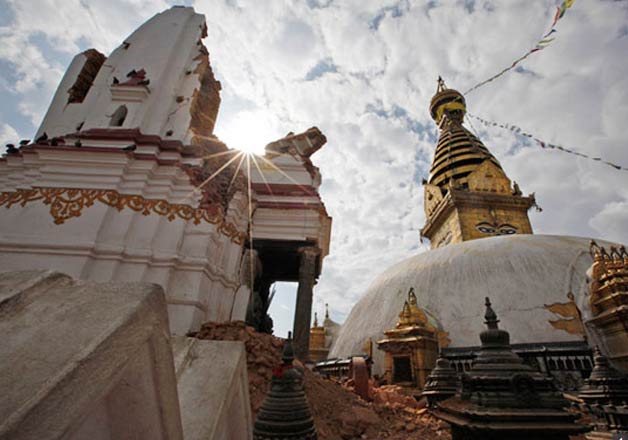
The devastating 7.9 magnitude earthquake took away centuries-old traditional valuables in a matter of seconds. A lot of buildings of cultural and heritage importance are damaged, and for the people of Nepal, it's a part of their life taken.
Kathmandu valley is a like a museum. It has seven UNESCO heritage sites - the largest number for one single city. And even as its government fight back to get back its people up on their feet, it definitely needs to pay more attention in getting back its history.
The important cultural heritages that Nepal lost partially are Taleju Bhawani, the top of the Jay Bageshwori Temple in Gaushala, Swyambhunath, Boudhanath Stupa, Ratna Mandir inside Rani Pokhari, and Durbar High School have been partially destroyed.
In Bhaktapur, most of the historic monuments, including the Chardham temple, Fasi Deva temple, the Chardham temple and the 17th century Vatsala Durga Temple, were fully or partially destroyed.
In Tripureshwor, Tripura Sundari – the historic structure suffered a significant damage whereas the Kal Mochan Ghat (a Mughal-architecture inspired temple) collapsed completely.
The monuments that were partially damaged outside the Kathmandu valley are- Manakamana temple of Gorkha, Janaki temple of Janakpur, Gorkha Durbar, Palanchowk Bhagwati of Kavrepalanchowk, Rani Mahal of Palpa, Churiyamai of Makawanpur, Dolakha Bhimsensthan of Dolakha and Nuwakot Durbar. Changu Narayan (One of the oldest Hindu temples in Nepal), Lumbini (oldest Buddhist shrine in the world as well as the legendary site of the Buddha's birth) suffered but not unlike other temples.
World Heritage site of Sagarmatha National Park that includes Mount Everest too was affected badly.
In Kathmandu, historic cultural monuments that shook the city and damaged the structures partially are:
Bouddanath Temple ( Stupa)
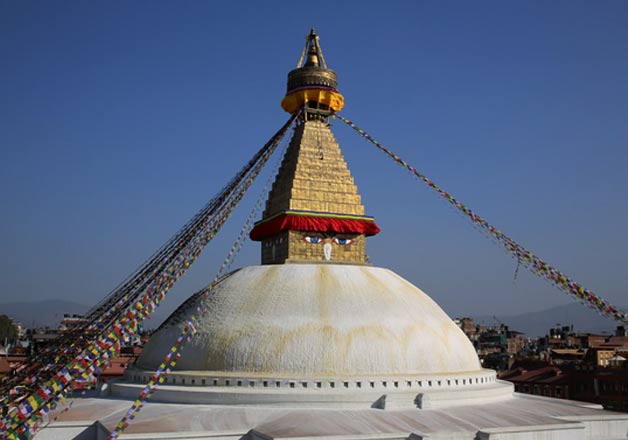
The fifth-century AD stupa is among the largest ‘stupa' in the world and serves as a center of pilgrimage for both- Nepalese and Tibetan Buddhists. The 1500-year-old stupa has survived, with reports of cracks in the spire whereas the Boudhanath stupa is relatively undamaged.
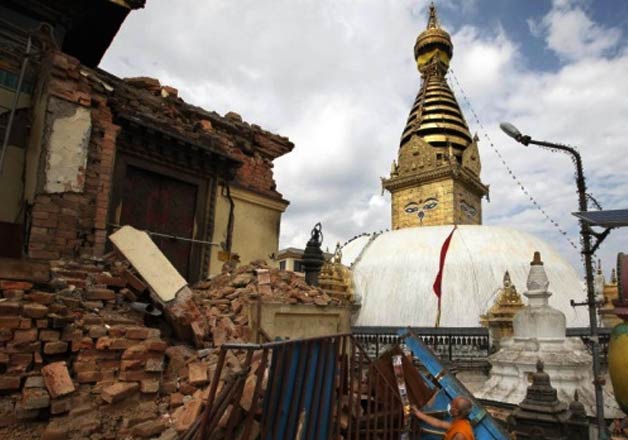
Swayambhunath was bit damaged in the deadly earthquake. This fifth-century historic structure of Nepal with colourful eyes of the Buddha adorned on its surface was one of the most loved tourist site. The 17th-century Pratapur Temple adjacent to the stupa collapsed, which was heavily damaged by lightning in 2011.
Historic structures that survived the deadliest earthquake are:
Kumari Ghar
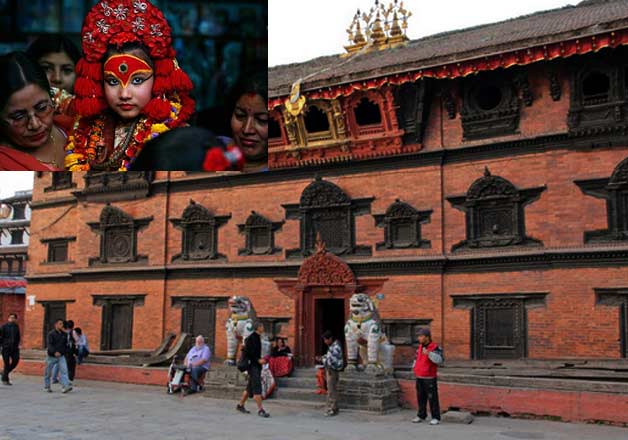
Even after the quake, regular puja of this deity continues as usual at her abode, Kumari Ghar. The thre storey architectural marvel stands unharmed in the midst of the rubble of ancient temples and old palaces.
Pashupatinath Temple
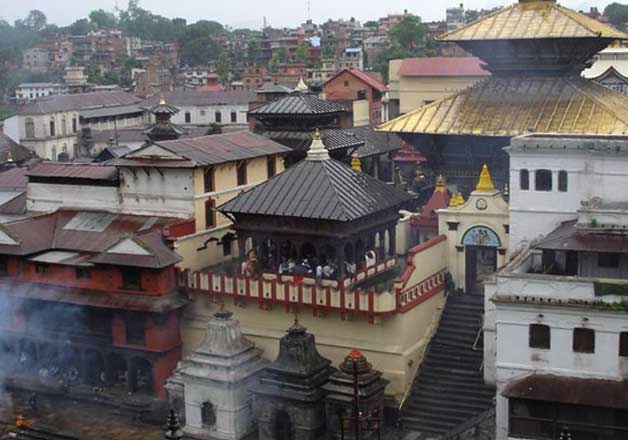
“Pashupatinath Temple'' one of the oldest Hindu temple of Nepal (5th century temple) is dedicated to the Hindu god Shiva. Though, people used to bring their near and dear ones to perform their last rites in Lord Shiva's premises -now; this place is busy in serving the earthquake victims for their last rites.
It just suffered minor cracks on the boundary wall when the quake jolted Nepal. It is one of the seven monument groups in UNESCO's designation of Kathmandu Valley as a cultural heritage site.
Let's pray for the departed souls and wish Nepal and its survivors may gain the glory back again!
